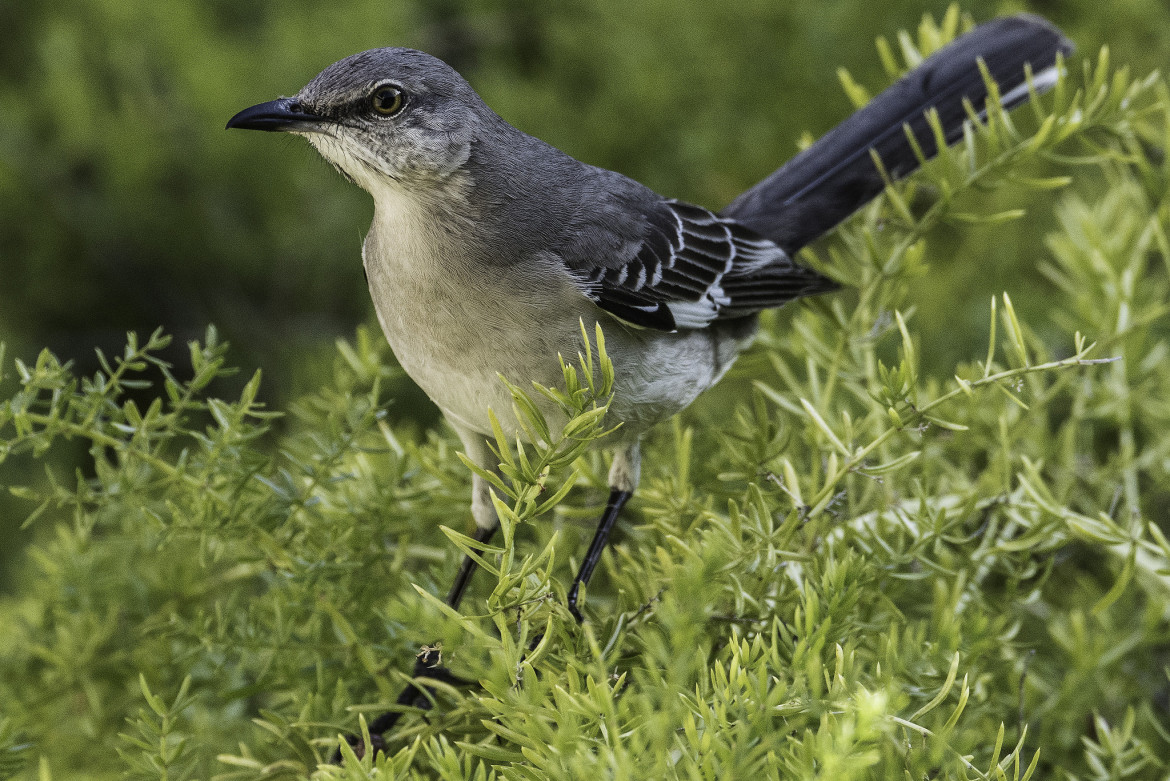
The Northern Mockingbird is perhaps best known for singing all night. Songbirds begin to sing in response to the amount of daylight, and the sequential singing of songbirds in the morning is known as the “dawn chorus.” On overcast days, the chorus starts later. Mockingbirds are stimulated to sing by a small amount of light, even moonlight, and can imitate a large variety of songs of other birds as well as those of insects, although it is arguable how accurate these imitations are. Only the unmated males sing at night; males with a mate sing only during the day. An individual Mockingbird may have a repertoire of up to 200 songs and tends to repeat each of them twice. Mostly gray in color, their robin-size body of about ten inches, long down-curved bill, long black tail with white outer tail feathers, and obvious large white patches in their wings make them easy to identify, especially in flight.